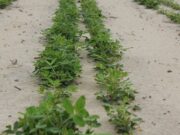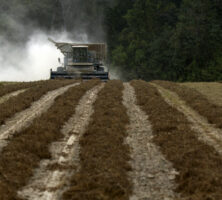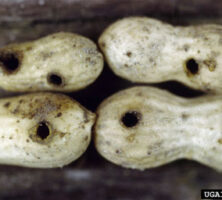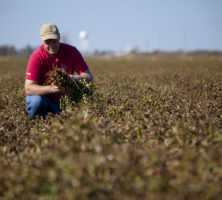Georgia is the number-one peanut-producing state in the country, accounting for approximately 49 percent of the crop’s national acreage and production. In 2014 Georgia farmers harvested 591,000 acres of peanuts, the official state crop, for a yield of 2.4 billion pounds. The state’s most famous peanut farmer, U.S. president Jimmy Carter, and his family raised the crop for decades in Sumter County.
Origin and Growing Conditions
The peanut (Arachis hypogaea L.) is native to South America and is believed to have originated in the areas of Brazil, Peru, and Bolivia. In its native state it is a tropical, perennial plant. Brought to the South by explorers from South America via Africa, the peanut is thought to have been grown in Georgia about a decade before the Civil War (1861-65). Despite its name, the peanut is not a true nut but a member of the legume family. The term peanut is used primarily in the United States and Australia. Elsewhere around the world, it is usually referred to as a groundnut.
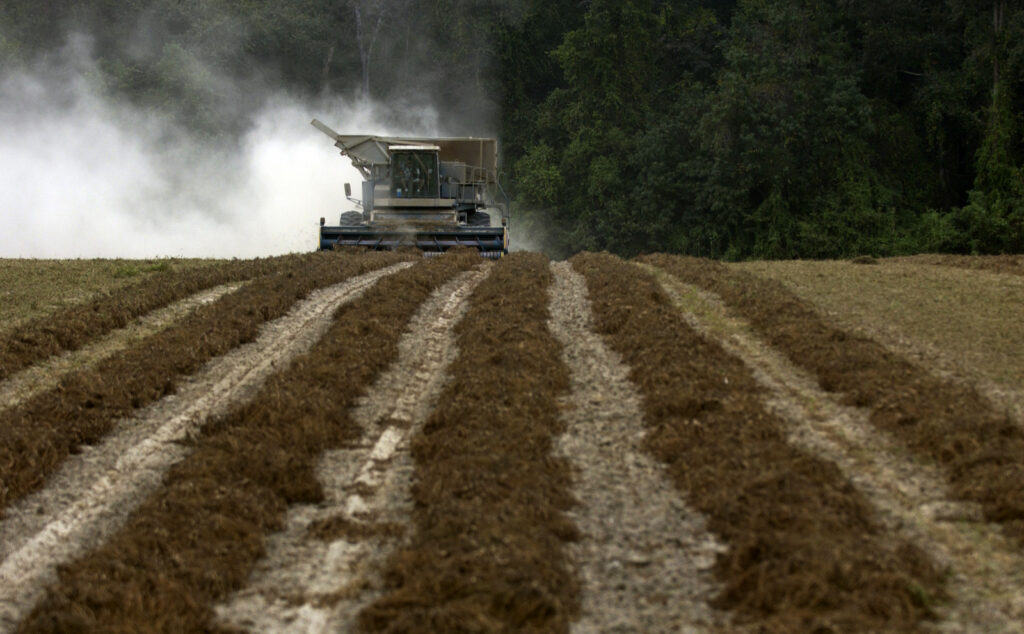
Photo by Stephen Morton, UGA College of Agriculture
The sandy soils and subtropical climate of Georgia are ideal for producing large yields of high-quality peanuts. Peanut production in Georgia is concentrated in the Coastal Plain, the area south of the fall line, which runs from Columbus through Macon to Augusta. Only a few counties in the southern half of the state, those in the southeastern corner near the Atlantic coast and the Okefenokee Swamp, do not grow peanuts.
Georgia peanuts require a long growing season of at least 150 days of warm weather. They also require about twenty-two inches of water during the growing season.
Varieties
There are four market types of peanuts: runner, Spanish, Valencia, and Virginia. Runner peanuts account for 99 percent of the acreage in Georgia, although all types have been grown in the state. Runner peanuts, which are also grown in Alabama and Florida, are used primarily in peanut butter (about 50 percent), as snack nuts (25 percent), and in candies (25 percent). Virginia peanuts come from the largest seed and are used primarily for in-shell roasting. Most are grown in North Carolina, Virginia, and South Carolina, with only about 10,000 acres planted in Georgia. Prior to the 1970s Georgia farmers grew mostly small, red-skinned Spanish peanuts because of demand from manufacturers.
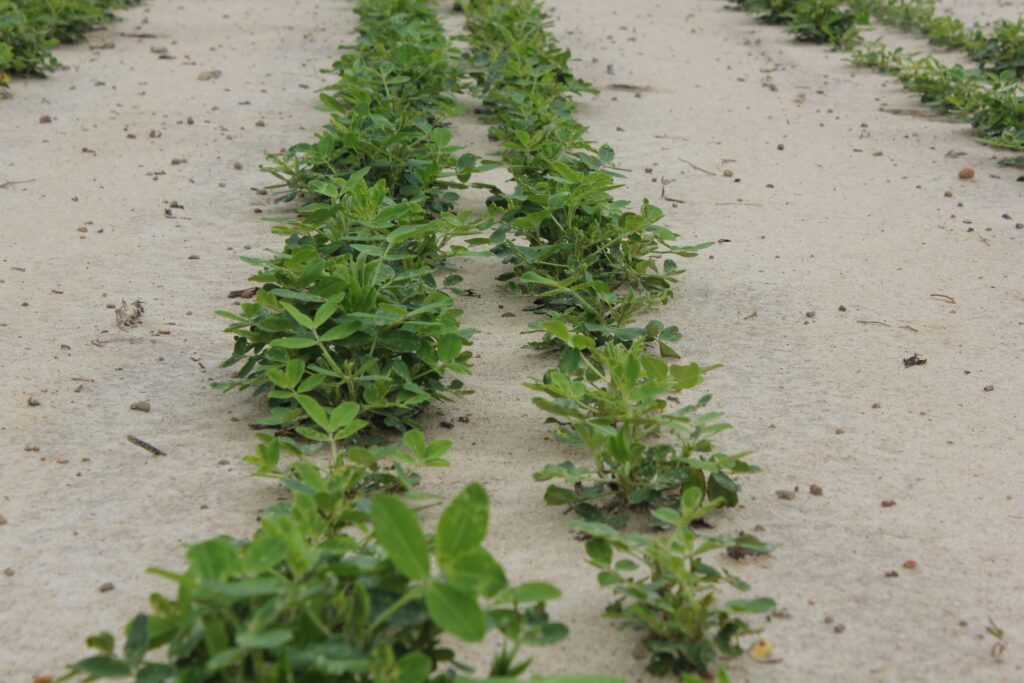
Photograph by the Georgia Peanut Commission
Acreage
Peanut acreage in Georgia has varied greatly over the years. During and immediately following World War II (1941-45), farmers were encouraged to plant as many acres of peanuts as possible for oil production to support the war effort. During that time peanut acreage in Georgia exceeded 1 million acres. In the early 1950s the U.S. government established acreage restrictions for peanuts, and Georgia’s allotment was limited to approximately 525,000 acres. The allotment system was in place until 1980, when a quota system was established.

Courtesy of Georgia Archives.
Acreage in Georgia climbed steadily during the 1980s and early 1990s, peaking at 900,000 acres in 1991. Because of lower yields from poor rotation conditions, farmers began reducing peanut acreage to improve yield potential. In the late 1990s and early 2000s acreage dropped into the 500,000 to 550,000 range. The quota program was dropped in the federal 2002 Farm Act, and a market loan program for the peanut was established. This program created the potential for peanut production in areas that had not historically grown peanuts because of previous restrictions. As a result, peanut acreage climbed to 620,000 acres in 2004 and 755,000 acres in 2005.
Environmental Challenges
Peanuts require intensive management. The crop is highly susceptible to many fungal diseases and requires multiple applications of fungicides. Peanuts respond to a long rotation; that is, the yield potential increases and disease pressure decreases when there are at least three years or more between peanut crops in the same field. As with any agronomic crop, weeds must be controlled. Insects are not always a serious problem but can reach yield-limiting levels in some years. Some of the Georgia peanut-production belt is also infested with nematodes, microscopic animals that feed primarily on the root system and/or the developing pods. Peanuts are expensive to produce, especially when compared with corn or soybeans, and pesticides are a major production cost.
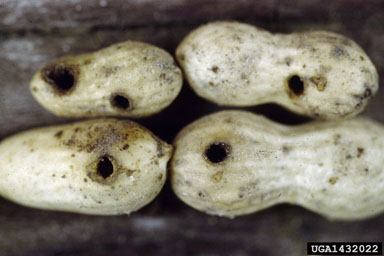
Photograph by Steve L. Brown, University of Georgia. Courtesy of Forestry Images
The Peanut Industry
All segments of the peanut industry, including grower, buyer, sheller, broker, manufacturer, and such allied industries as storage and transportation, are represented in Georgia. Numerous other industries support the peanut industry in the state, including equipment manufacturers, banking and other financial industries, and the agricultural chemical and fertilizer industries.
Research on all aspects of peanut production and handling is conducted by scientists with the University of Georgia (UGA) and with the U.S. Department of Agriculture based in Tifton. Research in Georgia has resulted in dramatically improved yield potential and quality. Some of the state’s critical advancements include improved varieties, better harvest techniques, water management through irrigation, improved pest management, and such new technologies as yield monitors, variable rate application of fertilizers, and irrigation water. Research by UGA food scientists has improved the quality, nutrition, and marketability of peanuts. Research in the areas of policy and marketing have given peanut producers around the country better opportunities for competing in a global market.
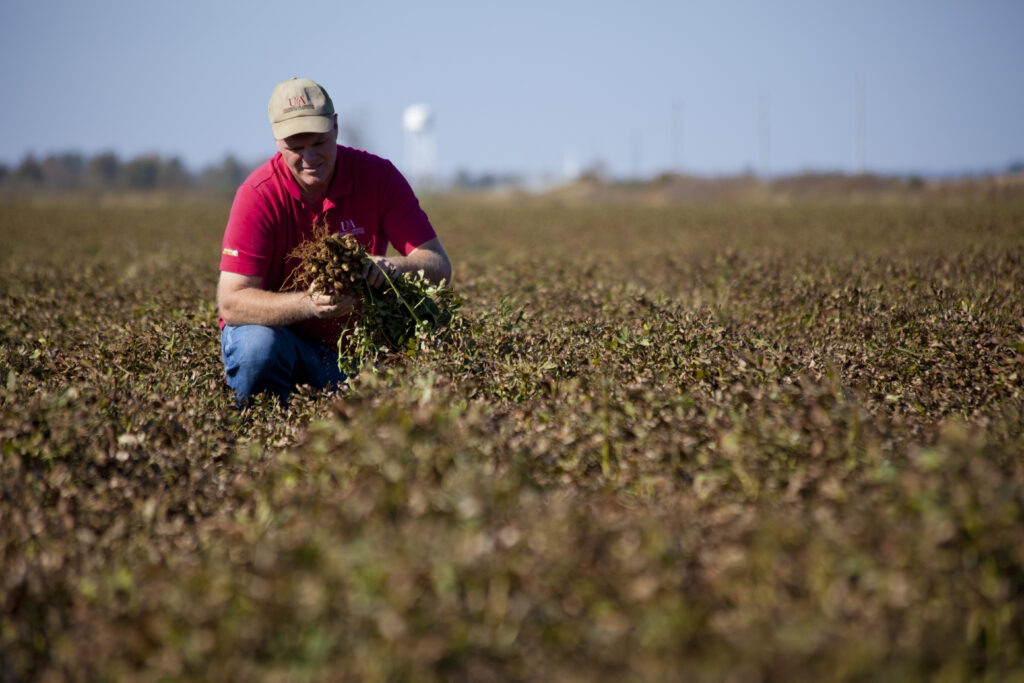
Photograph by uacescomm


